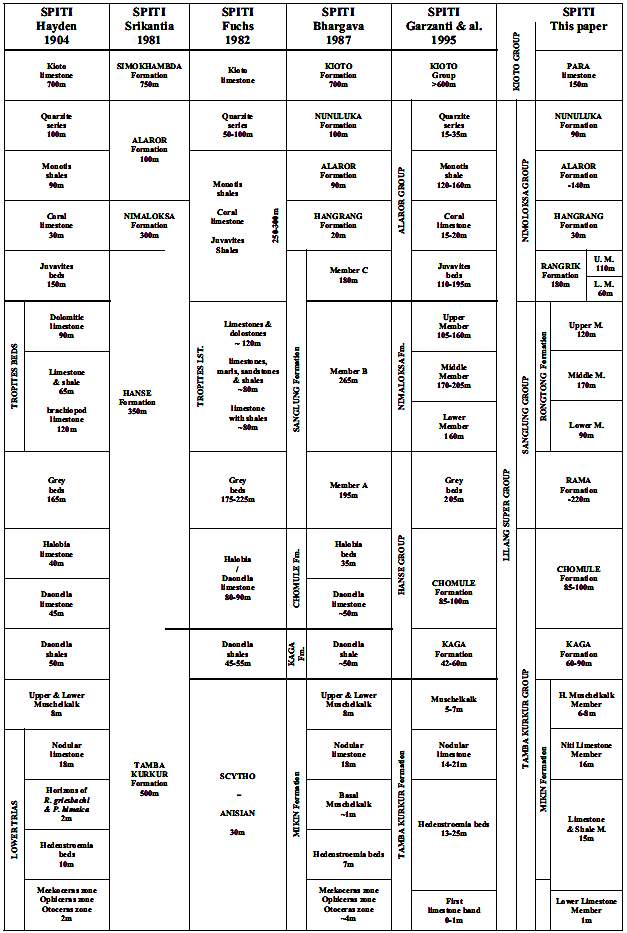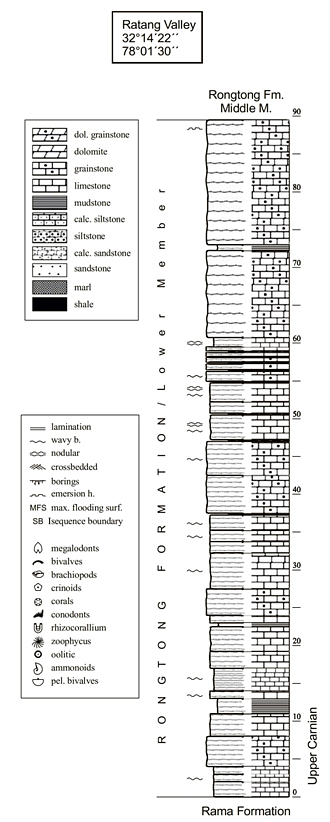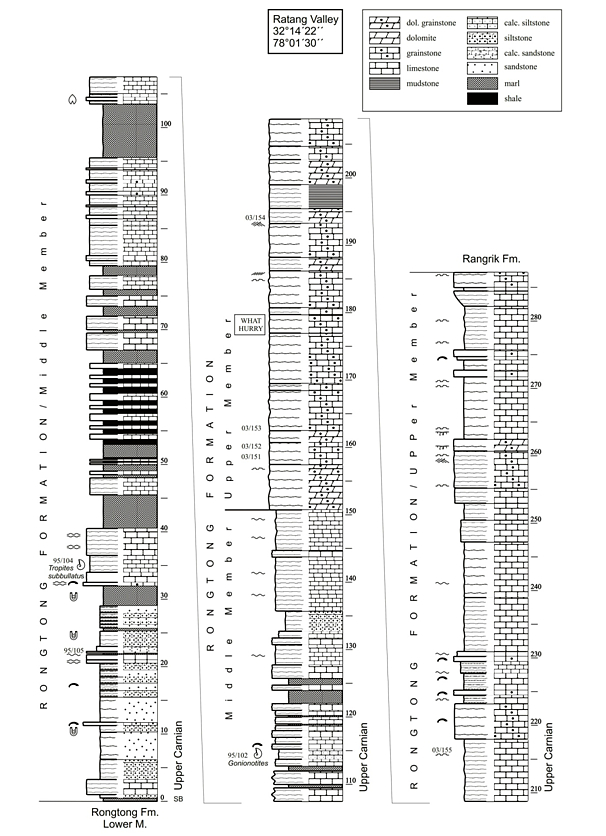Rongtong Fm
Type Locality and Naming
Type section is Near Rangrik. [Original Publication: Bhargava, O.N., Krystyn, L., Balini. M., Lein, R. and Nicora, A. 2004. Revised Litho- and Sequence Stratigraphy of the Spiti Triassic. Albertiana (Supplement), 30: p. 21-38.].
Synonyms: Sanglung B (Bhargava, 1987); Upper part of Sanglung Gr. It equals the classic Tropites Beds
[Figure: Zanskar-Spiti-Kumaun region location (provided by Om Bhargava)]
[Figure 0: History of Triassic lithostratigraphic nomenclature of Spiti (after Bhargava et al., 2004)]
Lithology and Thickness
Limestone. Lower member is nodular limestone with shale. Basal part of Middle member is sandstone and siltstone, and upper part is fossiliferous splintery limestone. Upper member is thick to medium-bedded cliff-forming limestone and dolomite. 380 m (Lower Member 90 m, Middle Member 170 m, Upper Member 120 m).
[Figure 1: Stratigraphic log of the Rongtong Formation, Ratang village in Spiti (after Bhargava et al., 2004)]
[Figure 2: Detailed log of the middle and upper members of the Rongtong Formation, Ratang Valley, Spiti (after Bhargava et al., 2004)]
Relationships and Distribution
Lower contact
Lower contact with the Rama Fm is conformable.
Upper contact
Gradational to somewhat sharp contact with the overlying Rangrik Fm.
Regional extent
Zanskar-Spiti and Himachal Pradesh to Kumaun-Garhwal region of Northwest Tethyan Himalaya
GeoJSON
Fossils
Tropites cf. subbullatus, T. discobullatus, Clydonautilus acutilobatus, Dielasma julicum, Spiriferina aff. Shalshalensis and Lima cf. austriaca.
Age
Depositional setting
Varied from quiet water below wave base, occasionally visited by storm to high-energy shallow basin affected by storms (Bhargava, 2008).
Additional Information
It equals the classic Tropites Beds.



